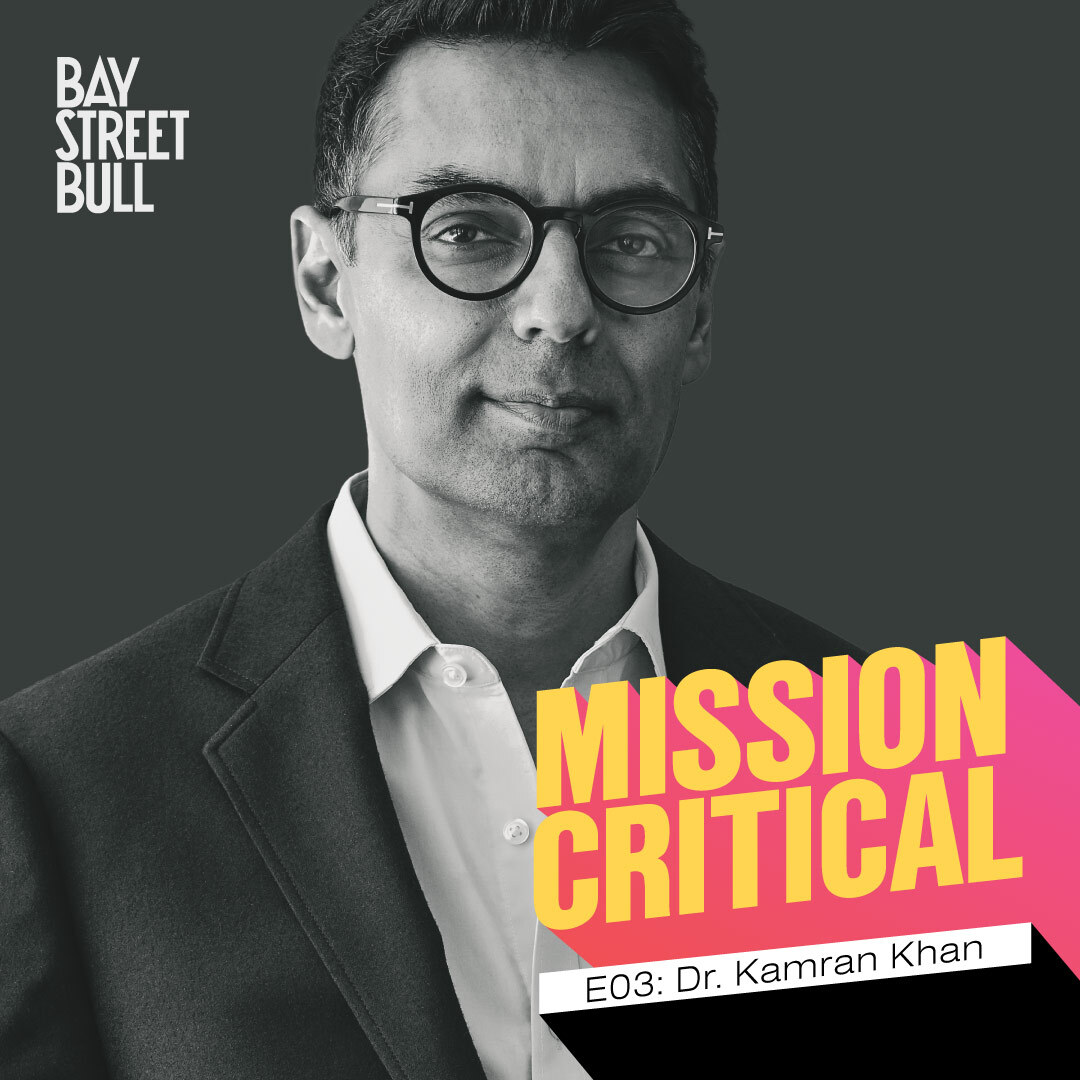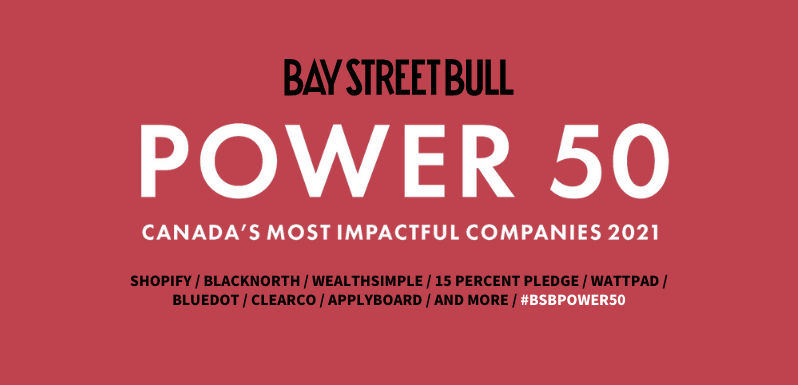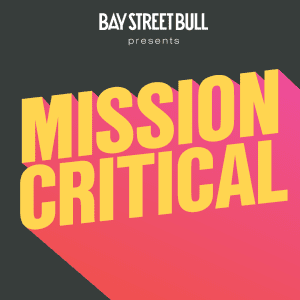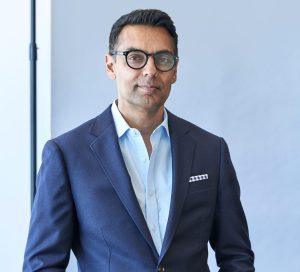As the world has witnessed, tackling a pandemic like COVID-19 requires lightning-fast agility in order to disseminate critical information to key decision-makers. No one understands this better than Dr. Kamran Khan, epidemiologist and founder of BlueDot, a Toronto-based social enterprise that harnesses artificial intelligence as an early warning detection system for infectious diseases. In today’s episode, Dr. Khan and Lance chat about why he started BlueDot, profit-purpose harmony, and using big data to disrupt disease.
KEY HIGHLIGHTS
[1:50] What drove a professor and epidemiologist to start a for-profit social enterprise? The ability to use business as a way to move quickly in the fight against infectious diseases.
[4:07] BlueDot is a digital early warning system that focuses on the four D’s: Detection, Dispersion, Disruption, and Dissemination.
[6:21] December 31, 2019. Dr. Khan and his team discovered an outbreak of pneumonia in Wuhan that would become ground zero for COVID-19.
[14:40] How can we harness artificial intelligence and big data to tackle complex problems like the spread of infectious diseases? And what’s been preventing us from doing so?
[18:08] Having a diverse set of skills and team members is critical to tackling complex problems. Dr. Khan has assembled an Avengers-like team of experts to do just that.
[22:08] How does a for-profit social enterprise balance the needs of its clients with that of public health
[25:27] What can we do to prevent an outbreak like COVID-19 from ever happening again?
Listen to the episode below or your platform (Apple, Spotify, etc.) of choice.
INTERVIEW
[INTRO]
“Diseases move incredibly quickly and they can have devastating, as we have seen, health, economic, and social consequences. We’re just going to have to be faster, smarter, and better coordinated if we are going to prevent or mitigate the consequences.”
Welcome to Mission Critical, a podcast about the big picture, the purpose, and the values that drive today’s most game-changing companies, entrepreneurs, and leaders. I’m your host Lance Chung, Editor-in-Chief of Bay Street Bull, and I’ll be introducing you to a group of brilliant minds who are making an impact on the world and forging the path ahead. While they may all be very different from one another, the question remains the same: What’s your mission?
At the end of 2019, life was dramatically different.
As the world collectively celebrated the start of a new decade with optimism and hope, who could have predicted what would come next: a procession of one calamity after another left in the wake of a world-dominating pandemic. For once, the Earth seemed to truly stand still.
As it turns out, one company saw the warning signs early on and raised the alarm nine days before the World Health Organization (WHO). That company was BlueDot, a Toronto-based social enterprise that harnesses artificial intelligence as an early warning detection system for infectious diseases.
Founded by Dr. Kamran Khan, an enterprising epidemiologist, and professor at the University of Toronto, BlueDot uses big data to scour the internet to predict the proliferation and dispersion of infectious diseases. They’re a key player and very much the future of our ability to tackle fast-spreading diseases in an increasingly connected world.
Lance Chung: Dr. Kamran Khan, CEO and founder of BlueDot, it’s an honour to be speaking with you today, how are you?
Kamran Khan: I am well and thank you for your interest in what we’re doing. Happy to be a part of this conversation today.
Lance Chung: We have a lot of ground to cover today. I feel like I can chat with you all day because I have so many questions about your company and everything that’s going on right now but perhaps we can start off with a bit of background. Can you briefly describe your journey to starting BlueDot?
Kamran Khan: It’s a little bit accidental in some ways. I happen to be a physician by training and specialized in infectious diseases and in public health. I did some of my training in New York and Boston, came back to Toronto and that was 17 years ago. Shortly after I got here, so did this virus that nobody had ever seen or heard of before, known as SARS. A colleague of mine got infected and there were other deaths across frontline healthcare workers, as well as citizens and the public. For me, it was a bit of a realization that we’d never seen anything like this before, and that this wouldn’t be the last time.
So, as an academic physician, I’m a professor at the University of Toronto and a scientist at St. Michael’s hospital. I spent the next 10 years studying outbreaks of emerging diseases: the swine flu pandemic in 2009, MERS, Ebola, and a wide variety of other outbreaks. Eventually [I] came to the conclusion that one of the key things that was needed was the ability to move really, really quickly. Outbreaks spread around the world incredibly fast and if we’re going to stay a step ahead of them we have to move even faster. I approached the Ontario Centres of Excellence, got an introduction to them, to MaRS, and it’s these kinds of organizations and the ecosystem here that were really helpful in helping me wrap my head around the fact that maybe I just needed a different vehicle for disseminating these kinds of insights and accelerating discovery and innovation—and maybe that that vehicle was a business.
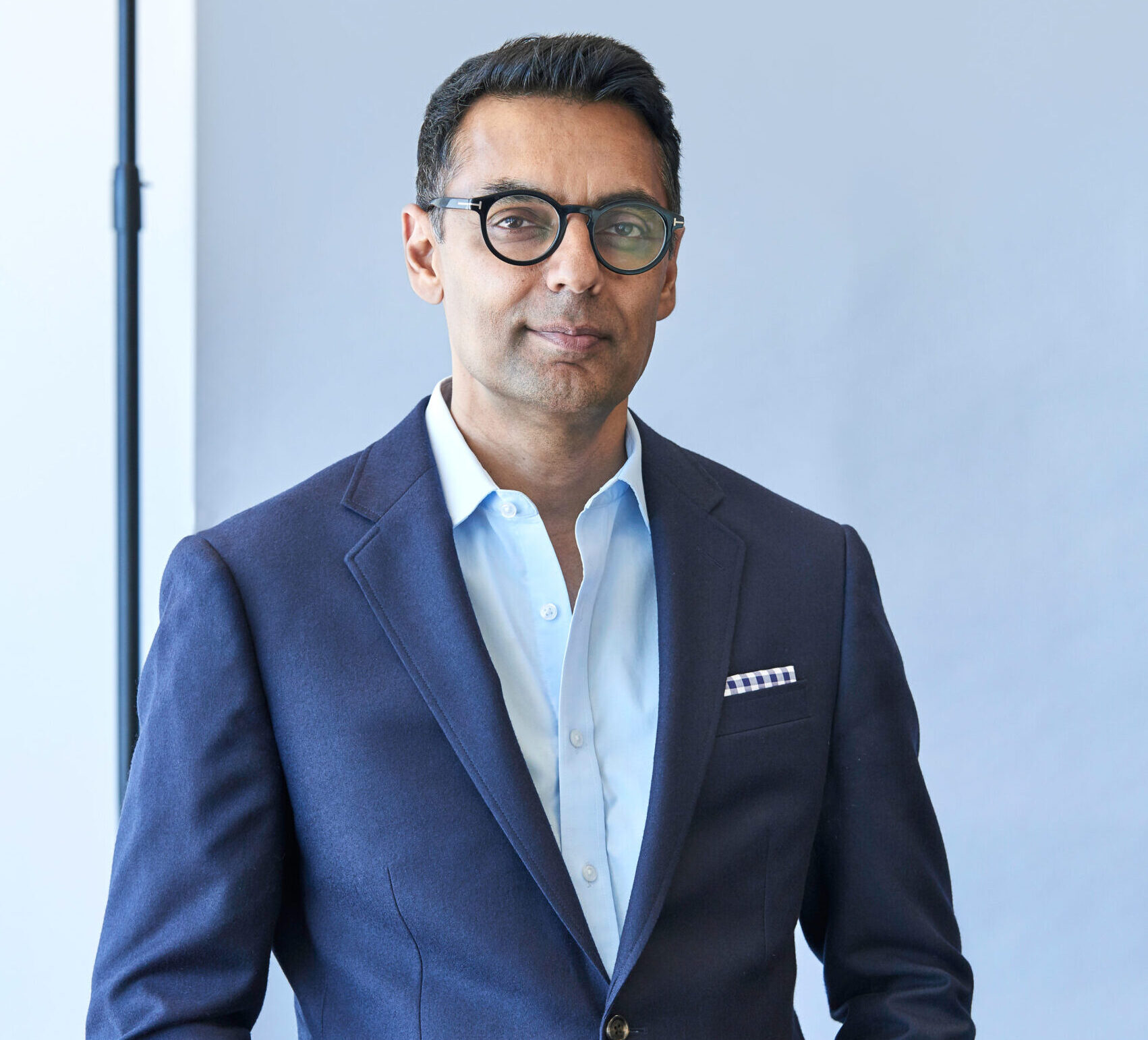

Lance Chung: I mean, the timing couldn’t be any better for a company like yours to come out. How exactly does BlueDot work to identify infectious diseases?
Kamran Khan: Yeah, so maybe what I’ll do is I’ll tell you a little bit about this digital early warning system that’s kind of a conceptual term, so let me break it down into some of the key components. We sometimes refer to these as the four D’s internally: early detection of threats; anticipating how threats will disperse around the planet because they move very quickly; anticipating the disruption that they may cause, diseases spread around the globe all the time, so what is it that actually causes some of these diseases to trigger outbreaks or possibly cause pandemics; and then finally dissemination, how do we get these insights into the hands of those audiences who really needs it. And as I’ll talk about later, ultimately our belief is that this is really about empowering the whole of society. This is not information that can be sitting in the hands of a small group of public health officials. We need to be ultimately empowering organizations more broadly in society.
One of the things that we learned about outbreaks during SARS was that if we rely on official reports from public health agencies and government agencies around the world when it comes to outbreaks, that information may not always come in the most timely manner and we may be waiting longer than we would like. So we have been using the internet as a medium to be gathering information, or early rumours or news of potential outbreaks from unofficial sources. This includes the world’s online media, it includes a wide variety of health blogs and forums, as well as information that is coming officially from government health organizations.
Now the internet is, of course, a vast medium. There are all these different languages and it’s all unstructured text data. This is where we’ve been using what is called natural language processing and machine learning, which broadly fall under the umbrella of artificial intelligence (AI), and using these types of analytical tools to process and make sense of this vast amount of data currently in 65 languages, and we’re tracking news of outbreaks involving over 150 different diseases and syndromes. AI has been a really powerful tool to find the metaphorical needles in the haystack.
Lance Chung: If we go back to December 31st, 2019. It’s the morning of New Year’s Eve. While everyone was getting ready to celebrate the new year, your experience was a little different that day. Can you tell us a little bit about what happened and what you saw?
Kamran Khan: I woke up the morning of December 31st, and you’re right, everyone was thinking about reigning in the new decade and our algorithms put forward an outbreak of pneumonia in Wuhan. Many people probably hadn’t even heard of the city Wuhan by that time, and there were a couple of dozen cases and the pneumonia was of unknown cause, and it seemed to be centered around this wet market in the city. At that moment, we didn’t know that this would turn into a pandemic but there were a number of parallels with the SARS outbreak 17 years earlier.
We don’t just rely on AI to actually replicate human intelligence. AI is playing to its strengths processing and organizing and structuring vast amounts of data, but then this comes to our team to review because humans can look at that event and say, Hey there’s actually some parallel to SARS, we should be thinking about this and paying close to attention to this particular event. The one piece that I will add on is on that second D of the four D’s that I was talking about is dispersion. We had asked ourselves at that moment, is it really 27 cases or is it possible that it’s larger? What if it actually increases in size and becomes larger than 27 cases. We know with many new diseases that are newly emerging, as we’ve learned, you’re often seeing the tip of the iceberg. It might be bigger because there’s no tests for it or it’s just not fully appreciated the extent of the outbreak. So that is where our system, part of the early warning system, is actually connected to all of the flight data around the planet—the schedules of aircraft moving around the entire world, as well as even the anonymized flight itineraries in a year of over four billion travelers boarding commercial flights. So we’ve built up a system now where the engine that is crawling the web in Chinese and Spanish and Hindi and all these other languages is talking to this system that is monitoring and analyzing the movements of travelers around the planet. And that integration now is just taking a couple of seconds. We had analyzed the final destinations and some of the places that we thought would be at greatest risk if this outbreak were to spread further beyond mainland China. Well, it turns out that 12 of the 20 cities we listed as being at greatest risk were among the very first in the world that were impacted. So, Bangkok for instance was the very top of our list. Bangkok was the very first city that had COVID-19 appear in that city after it had spread outside of mainland China.


Lance Chung: It’s incredible because there is so much information that is being uploaded and published online—a lot of information that you’re receiving. It’s one thing to be able to collect that data, but what do you do with that information once you have it?
Kamran Khan: BlueDot, we kind of have the DNA of an academic institution. I’m still an active professor at the University of Toronto, and we kind of bring that into the organization’s DNA and then ultimately use the business to essentially implement and disseminate scientific knowledge using technology.
But I think the other piece that you are perhaps alluding to is around the diversity of data and the complexity of this problem. When we talk about big data, we think about it in terms of volume and velocity. The problem with infectious diseases is the variety. That’s the problem. It’s not about managing terabytes of data or data that’s streaming with a very high frequency, it’s the fact that infectious diseases sound like one thing, a homogeneous thing, when in fact they’re a very heterogeneous, diverse group of things. One moment we have to think about Zika virus, which is spread by a mosquito and we have to understand the biology of the mosquito and how that relates to temperature, and how that relates to a human; the next minute we might think about Ebola or measles or COVID-19, and they’re all very, very different. So bringing all of this data together, and what is needed is the ability to transform very diverse data into an insight, and an insight into an action. And that has to happen very, very quickly. So going from data to insights is complex. This is not a simple problem to tackle and you require not only a diverse set of data, but you require a diverse set of perspectives and expertise to derive meaning from this data.
Lance Chung: And to your point, a lot of it is to prevent a lot of these things from happening. And you use artificial intelligence to identify irregular activity that has to do with these infectious diseases. What happens when that irregular activity becomes regular activity, in the case of a full-blown pandemic?
Kamran Khan: If we think of an outbreak a bit like a fire with embers flying off, the first part is early detection and knowing there is a fire. The second part is knowing where those embers may be flying off to. This is kind of like infected travelers flying off to different parts of the world. And then finally, will they land in environments where they will actually then trigger the next outbreak. So at BlueDot, we have been building a data foundation and an analytic and technologic foundation that is really able to look at and mitigate risks over the full life cycle of an outbreak. When COVID-19 started to land in different cities, let’s just talk about here more closely at home in North America, we started to utilize anonymous data on the locations of mobile devices to understand how diseases might not only disperse, but also to generate really meaningful insights about interventions like physical distancing. When you’re dealing with an outbreak that’s kind of out of control, your first order of business is to test and identify cases, and then isolate those cases. But it’s then after that, to identify their contacts and quarantine those contacts. We’ve heard quite a bit about this. When those fail and an outbreak keeps accelerating, that’s where you sometimes have to go to these physical distancing measures and have people staying at home and minimizing contact with others. So this is where we continue to work, for example in the state of California, supporting the efforts there to help the public health community understand where the stay at home orders, for example, are working. Where are they not working? Where are populations in communities getting fatigue? So the public health community has the epidemic intelligence to be able to understand how it’s going to be used its very finite human resources in the most effective and efficient way possible.
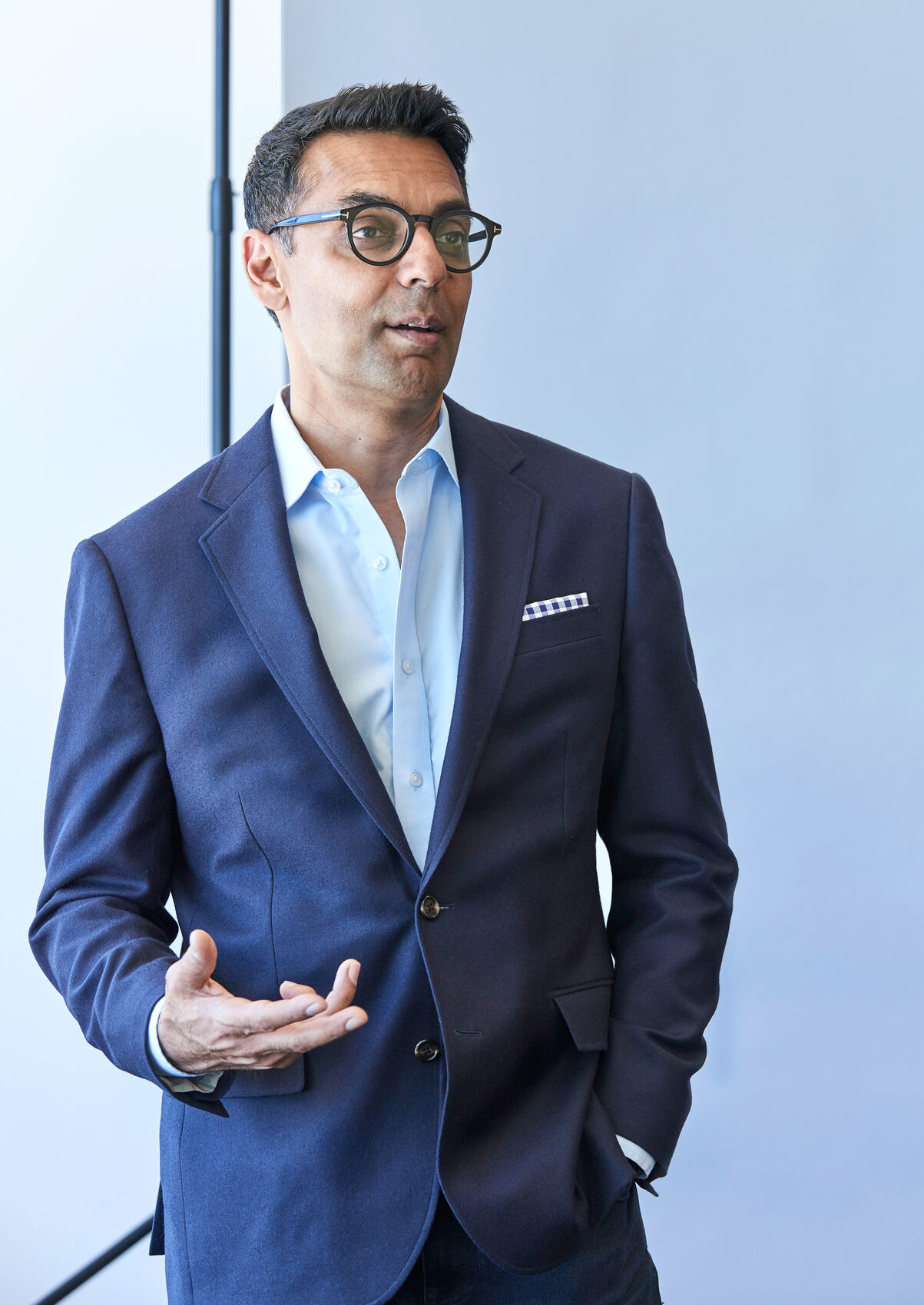

[INTERLUDE]
As the world has collectively witnessed, tackling a pandemic like COVID-19 requires lightning-fast agility in order to disseminate critical information to key decision-makers. No one understands this better than Dr. Khan, who fought through the SARS outbreak and witnessed crucial areas that needed improvement if the world was to have a fighting chance against future outbreaks. He argues that the answer to tackling and outpacing the spread of disease can be found in the entrepreneurial ecosystem, where business can be used as a vehicle for innovation and information. In his view, purpose doesn’t have to come at the expense of profit—it doesn’t have to be a zero-sum game. We need to use all the tools available to us in order to tackle problems as big as SARS or COVID-19. It’s the reason why he created BlueDot and undoubtedly a critical key to a future free of infectious diseases.
Lance Chung: Shifting just to the field of artificial intelligence. Obviously, Canada has made some incredible contributions to that field and is a leader in artificial intelligence. When it comes to infectious diseases and using big data, it doesn’t seem like it’s been a big part of the conversation. How do you think that dialogue needs to change as we move forward?
Kamran Khan: Diseases move incredibly quickly and they can have devastating, as we have seen, health, economic, and social consequences. We’re just going to have to be faster, and smarter, and better coordinated if we are going to prevent or mitigate the consequences. We need to be using all the tools that we have available to us. On one hand, the world is changing through globalization where we are seeing the emergence of these types of diseases and outbreaks, and they’re occurring with greater frequency, scale, and consequences. If we just look back at the last 20 years, there’s never been a 20-year period in human history with the outbreaks that we’ve seen. Just thinking and going back to even 1999, West Nile virus showed up in North America and changed the entire continent forever. We kind of forget that it wasn’t here before then, but on the other hand the world is changing in ways that can really play to our advantage. We have growing access to big data, we have advanced analytical tools like machine learning to make sense of this data, we’ve got digital technologies where can literally spread knowledge around the world faster than any outbreak. So, we have the raw materials needed to be able to move more quickly.
I think that the other challenge is that in health, we have been a little bit slower as a sector in health and medicine than other industries, whether it’s social media or transportation or marketing. There are other fields that have been making use of data in ways to generate really meaningful insights. I think one of the reasons here is that the problems we’re tackling in health and medicine are complicated. These are not simple challenges.
Lance Chung: And to your point around the complexity of trying to solve a lot of these challenges in medicine and healthcare, aside from that, what do you think are the hurdles that prevent us from embracing big data fully, whether that’s from a technological innovation standpoint or a policy standpoint, even?
Kamran Khan: A couple of thoughts. Part of this is there’s a technical challenge. There is a creating organizations that are sufficiently diverse that are able to tackle these complex problems. I think that’s a really important point that I just want to spend a moment on because these kinds of problems we’re dealing with in health, and in particular infectious diseases, are not ones that you can tackle with one set of expertise. One of the things that we’ve built at BlueDot is a diverse set of skills. We’re an eclectic mix, a deliberately eclectic mix of physicians, and veterinarians, and ecologists, and data and scientists, and geographers, and epidemiologists, and computer scientists, and engineers. And you can get a sense that every one of us brings a slightly different perspective to this problem. AI and machine learning is a tool but ultimately you need that diversity of skills and perspectives to be able to generate and derive meaning.


Lance Chung: Having a team that is diverse in its background and experience and qualifications, you have physicians, vets, epidemiologists, geographers, data scientists on your team, etcetera etcetera. You’ve almost assembled this Avengers team who can tackle a pandemic, and it makes total sense because when we have discussions around diversity in the boardroom, diversity in companies, that is to acknowledge that people have a diverse range of experiences to contribute to a larger picture. Now, when it comes to the data you’re harnessing through machine learning, where do you strike the balance between human intelligence and big data within this context. Where do they each come into play, and what do they have the most to offer?
Kamran Khan: We all need to be playing to our strengths. When I think about that, between humans and machines, machines can process vast amounts of data and replicate certain types of processes. Machines don’t need to sleep. So that is where we have been really leveraging the strengths of machines but humans really bring a higher order of understanding. If I think about our early detection of COVID-19, even before it had a name, it was our understanding of history that was actually very relevant there.
Lance Chung: You mentioned earlier about BlueDot’s mission, and I think that’s important to bring up. As a company, what are the values that act as ultimately the pillars and foundation that guide your work.
Kamran Khan: First of all, our first core value is that we are driven by purpose, and that is how we really bring a lot of the talent into the organization. People are excited about doing something that’s bigger than themselves. One of our other core values comes from the Hippocratic Oath. First, do no harm. We’re not talking about using machine learning to optimize something in a video game, not that that isn’t important. But we’re talking about people’s lives and it’s incredibly important that we be very, very precise and very thoughtful. This is where we bring in the DNA of an academic institution around a lot of the rigor and testing around our work.
Our third value is thinking without borders. It’s a metaphor in some ways around how diseases don’t respect borders and can jump across the planet. But it’s also really about recognizing that we need that mindset and thought processes that are breaking down silos of conventional thinking because the kind problems that we’re tackling in many instances have never been tackled before.
The fourth is around diversity. I know that perhaps it can sound like a cliche that you need a diverse group of people to tackle complex problems, but I think my experience has been that this is absolutely the truth. We could not tackle the problems we are taking on without having someone who knows in depth how to talk to data streaming from a satellite, or someone else who understands the biology of a mosquito, and so on and so forth.
And the last comes from another physician, Albert Schweitzer, and it’s really paraphrasing a quote, and it’s ultimately that success comes from happiness. What we are really trying to do is make sure in our culture is that we are empowering individuals to be enabled and happy in what they are doing. I think with COVID-19, we perhaps maybe don’t fully appreciate it at times because we’re in the middle of it, but this is one of the most important events in human history. And history is kind of unfolding and being written in front of our eyes. I think, for many of us, there is such a profound sense of purpose and meaning to be able to be contributing in a way that is impacting other people’s lives and for all of us, that is what gets us out of bed in the morning.
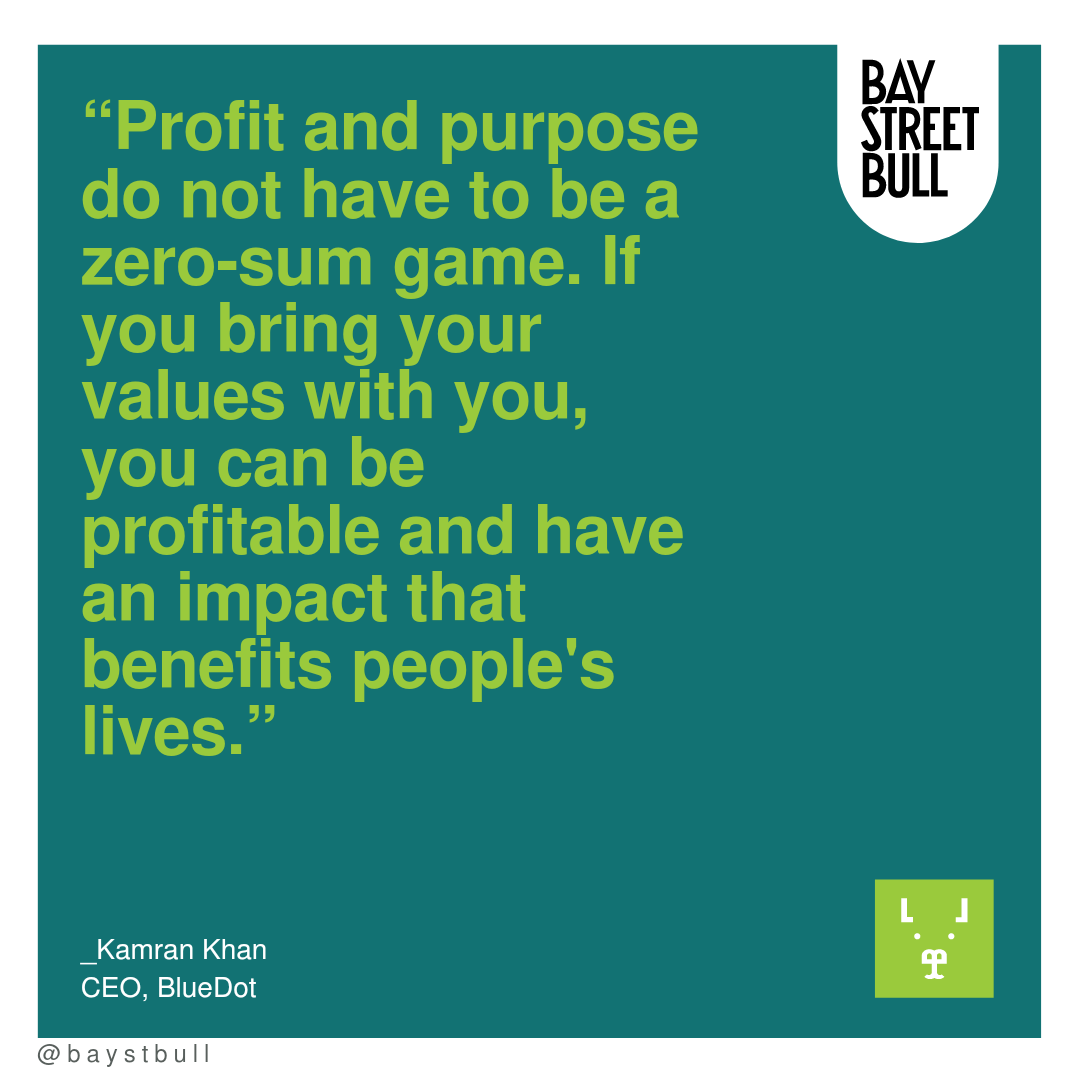

Lance Chung: Now, as a for-profit social enterprise, how do you balance the needs of your clients and something like public health, especially in instances where, for example a private health insurance company in the US, would want to enlist your services or something like that?
Kamran Khan: Now, a couple of thoughts there are, one of them is that for us, business is really the vehicle for us to be able to use revenue to reinvest into research and development, and to accelerate innovation. Now I can say this as a professor for years that wrote grants, that is not a particularly timely process. Now, what we are doing is generating jobs, we’re generating insights that are protecting populations. We are selling and licensing our technologies to countries around the world that is improving lives, but generating revenue and allowing us to reinvest that. I think it’s very important for us to recognize that in order for us to tackle these threats, we need to be empowering the whole of society. I think I mentioned this at the very beginning. It’s not enough for an insight to sit in the hands of a small group of people in the public health agency. These insights have to be getting to the frontlines of our healthcare workers and our hospitals. Sick patients don’t go to the public health department, they come to the emergency department. While many of us might think that these insights are delivered there instantaneously, that’s actually just not the case. We need to have more astute clinicians and empower our frontline healthcare workers with these types of meaningful insights so they can protect themselves, but they can also protect the rest of us. And astute clinicians could literally stop an outbreak in its tracks.
The last piece is, we have to be recognizing that industry also can be a part of the solution. One of the things that we’ve learned with COVID-19 is that companies with global footprints around the world have been saying, we need to be thinking about ways to protect our employees but also to anticipate disruptions in business continuity or broken supply chains that could really impact the financial resilience of a business.
Lance Chung: I guess it goes to this bigger conversation around profit and purpose, and whether or not they can coexist or if they are mutually exclusive, whether people see them as more church and state or as partners.
Kamran Khan: Before founding BlueDot, I just kind of thought that profit must mean that it comes at the expense of purpose. I think what I’ve really come to learn and come to believe and see how we live out our values at BlueDot is that profit and purpose do not have to be a zero-sum game. If you bring your values with you, you can be profitable and you can have purpose and impact that is benefitting peoples’ lives.
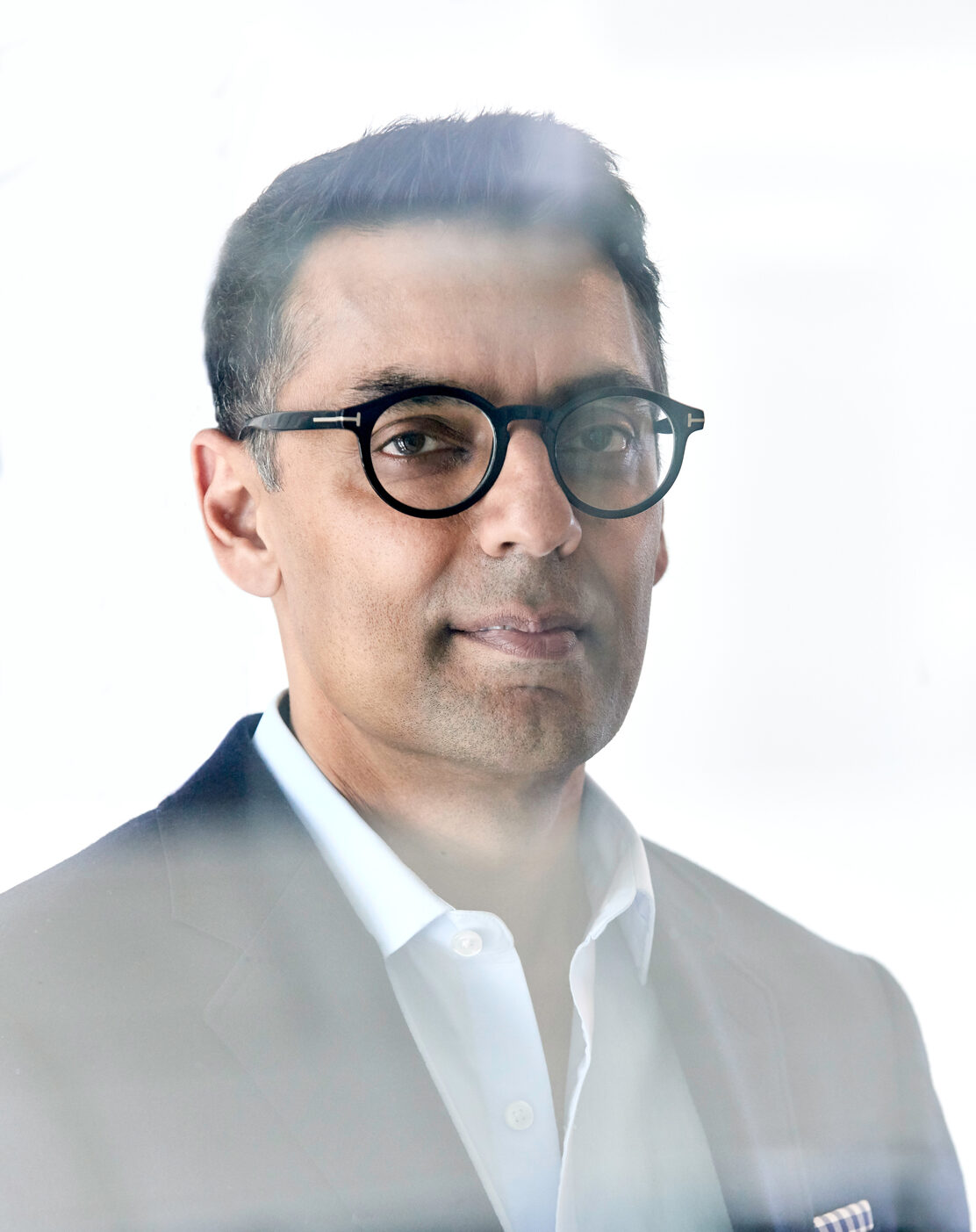

Lance Chung: So just as we finish up, what do you think is the biggest lesson that we’ve learned from COVID-19 when it comes to early detection and prevention, and harnessing big data? What do we need to do in order to prevent something like this from happening again?
Kamran Khan: In public health and in medicine, we often talk about different levels of prevention—primary prevention, secondary prevention, and tertiary prevention. Let me just describe why I think we need to be thinking about this problem in the same tiers. Primary prevention is really about, how do you prevent something from happening in the first place? So, a vaccine would be an example of, if you get vaccinated and it’s an effective vaccine, you don’t end up getting the infection. When we think about COVID-19, what we are dealing with today is the symptom of a much broader condition. We are just dealing with the underlying drivers of the fact that our world is changing. How we are interacting with the world around us is actually the catalyst that is creating the sparks for these types of outbreaks.
So, what do I mean by that? About three-quarters of all new emerging diseases that we have see have their origins in animal populations, whether we are talking about SARS, or even HIV, or Ebola, or a Zika virus, or swine flu, the H1N1 pandemic. These have their origins in animals and they have made their move over into humans, adapted themselves, and then in our hyper-connected world, spread around the planet. Mother nature, as I mentioned earlier, is trying to tell us something, which is the way we are interacting with the world around us, whether it’s the industrialization of agriculture, whether it’s the mass consumption of wildlife, whether it is the disruption of wildlife ecosystems: these factors are catalyzing the emergence and spread of many infectious diseases that are having devastating consequences. Health consequences, economic consequences, social consequences to humanity. So, I know today, we are very focused on how many cases of COVID-19 there are and deaths, and we should be because this is the crisis that we’re in right now. What I hope is that we don’t lose sight of the fact that this is a moment for reflection as well. And it’s a moment of asking ourselves, How did we get here in the first place? And why are we seeing more outbreaks than we’ve ever seen before? And let’s rethink how we’re interacting with Mother Nature because Mother Nature is sending us a message about how we’re doing that.
The second piece is secondary prevention, which is early detection. This would be like getting a colonoscopy to make sure you don’t have colon cancer, and detecting it before you even know it. Well, what BlueDot is building are those early warning systems to detect threats at the earliest stage possible because if there is one key lesson that I think we have learned here, it’s that time is everything. It is our nonrenewable resource; we don’t get it back and that if we intervene early, we might be able to prevent an outbreak or we could change the course of an outbreak and really mitigate its consequences. Time is critical. An early warning system is needed that can have a bird’s eye view of what’s happening around the planet, understand risks of dispersion, understand what kind of disruption might occur so that we can respond in a way that is commensurate with the risk but is also timely and coordinated, and efficient and effective.
And tertiary prevention is about how we minimize harm once something is already underway. In the case of COVID-19, the outbreak is underway, how do we quickly detect cases, identify contacts, and minimize consequences because the outbreak is already taking place? Right now, we’re kind of focusing on tertiary prevention and mitigating risk to prepare for what may be coming in the weeks and months ahead.
But I think when we look at how we can prevent this from happening again, we have to look past tertiary prevention, we’ve got to think about secondary prevention and early warnings and signals so we use our time effectively and act appropriately and in a timely manner. And we need to also be thinking further upstream about primary prevention, and what actions do each of us have as global citizens? If this has taught us anything, we hear the phrase “We’re all in it together.” Well this has really taught us that this is not just about how every human’s health is now connected around the world, this is how every human’s health is connected to every other living system on our planet. That is an important piece for us to just not lose sight of; I think that is incredibly important for that reflection. I realise that in this moment we may not have the mindshare and the capacity to spend a lot of time right now but I think it will be very important for us to do as we see this evolve, and we will get through this one day at a time. We will get through this. But then for us to kind of look back and say how do we avoid getting ourselves back in the same position again because if we do not learn the lessons, we may find ourselves back here sooner than we would like.
Lance Chung: Right, it’s an opportunity to learn from everything that’s going on right now. Well, I know you’re a very busy man and you’ve been very, very generous with your time and I very much appreciate you being able to spend some time with us today. It’s been both a pleasure and enlightening to chat with you.
Kamran Khan: Thank you for having me, and I have really enjoyed this conversation so really appreciate your time and interest.
[OUTRO]
What I love about the kind of company that Dr. Khan is building is not just the fact that he’s harnessing technology in a new way to, ultimately save lives, but he’s doing it by building a super team of experts you might not immediately associate with a company focusing on infectious diseases. Yes, he’s got physicians and epidemiologists, but he’s also got veterinarians, geographers, data scientists, and more. And that’s because these are very complex problems, which require widening the scope of perspectives in order to best tackle them. It contributes to the fact that diverse skill sets and points of view in any organization help us build better businesses and solve complex problems.


